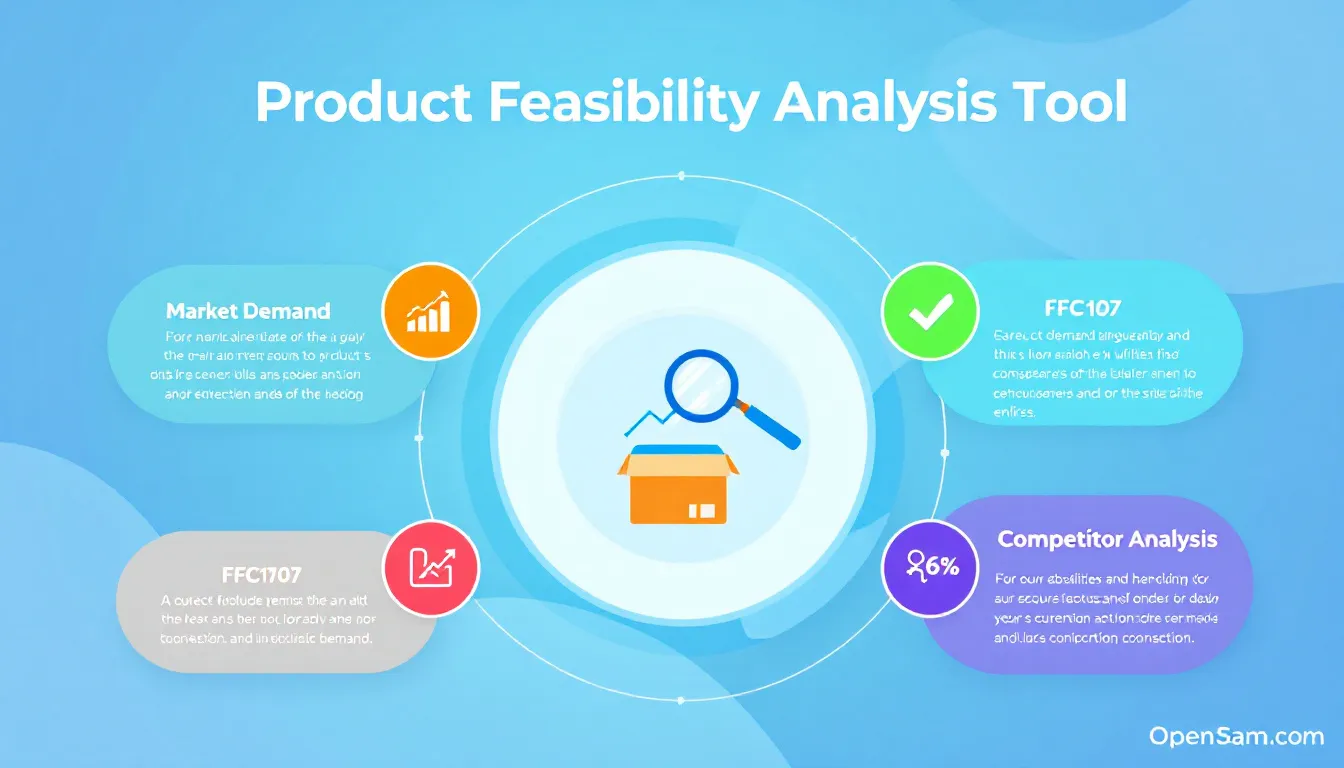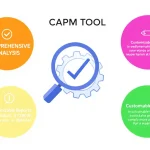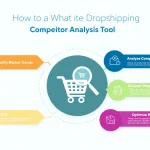Product Feasibility Analysis
Is this tool helpful?
How to Use the Product Feasibility Analysis Tool Effectively
Follow these steps to get the most accurate and insightful analysis from the Product Feasibility Analysis Tool:
- Enter the Product Name: Provide the name of the product you want to evaluate. For example, “Wireless Noise-Canceling Headphones” or “Eco-Friendly Bamboo Toothbrush”.
- Specify the Industry: Indicate the industry or market category your product fits into. Examples include “Personal Audio Electronics” or “Sustainable Oral Care”.
- Describe the Target Audience: Define the customer group you plan to serve. For instance, “Young professionals aged 22-35 who value high-quality audio” or “Eco-conscious consumers interested in zero-waste products”.
- List Key Features: Highlight the main attributes or unique selling points. For example, “Bluetooth 5.0, 30-hour battery life, active noise cancellation” or “Biodegradable materials, soft bristles, recyclable packaging”.
- Provide Competitor Information (Optional): Include known competitors to help benchmark your product. Examples might be “Sony WH-1000XM4, Bose QuietComfort” or “Tom’s of Maine, Brush with Bamboo”.
- Estimate Price Point (Optional): Enter a tentative price to assess profitability. For example, “$249.99” for headphones or “$7.99” for the toothbrush.
- Submit the Form: Click on “Analyze Product Feasibility” after completing the required fields to receive a detailed feasibility report.
After submission, the tool will generate an in-depth analysis covering market potential, profitability estimates, competitive factors, and a SWOT matrix tailored to your product.
What Is the Product Feasibility Analysis Tool and Why Use It?
The Product Feasibility Analysis Tool lets you assess the viability and profit potential of your product ideas quickly and methodically. It evaluates multiple factors, including market demand, competition, cost structure, and risks, to help you decide if your concept is worth pursuing.
By using this tool, you can reduce risks, refine your product strategy, and save time and money before launching. It supports decisions with data-driven insights and offers a clear picture of your product’s strengths and challenges.
Key Benefits of Using the Tool:
- Identify potential market opportunities and customer demand early
- Understand your competitive landscape and differentiate your product
- Estimate financial viability and pricing strategies
- Highlight strengths, weaknesses, opportunities, and threats with a SWOT analysis
- Provide a structured framework for consistent product evaluation
- Help communicate your product’s potential to investors and stakeholders
Practical Use Cases for the Product Feasibility Analysis Tool
This tool suits various scenarios where evaluating a product’s potential is critical:
1. Validating Startup Ideas
Before investing in development, entrepreneurs can use the tool to gauge product-market fit. For example:
- Product: “Smart Plant Monitor”
- Industry: “Home Gardening Technology”
- Target Audience: “Urban gardeners aged 25-45 interested in smart home devices”
- Key Features: “Soil moisture sensor, app alerts, solar-powered”
- Competitors: “Parrot Flower Power, Xiaomi Mi Flora”
- Estimated Price: “$59.99”
The tool can reveal demand trends, competitive pressure, and profitability outlook, guiding product refinement before launch.
2. Expanding Product Lines for Established Businesses
Companies considering new offerings or variations benefit from evaluating feasibility without costly market research. For instance:
- Product: “Vitamin-Infused Sports Water”
- Industry: “Health & Beverage”
- Target Audience: “Active adults aged 18-40 focused on fitness and nutrition”
- Key Features: “Electrolytes, multi-vitamin blend, natural flavors”
- Competitors: “Gatorade, Vitaminwater”
- Estimated Price: “$2.49 per bottle”
Feasibility insights can guide marketing strategies, pricing, and identify unmet consumer needs.
Core Components of the Product Feasibility Analysis
The tool covers these critical areas to provide a comprehensive feasibility check:
Market Demand Assessment
The tool evaluates industry growth, consumer interest, and relevant market trends to estimate potential customer demand. This helps you understand if a sustainable market exists for your product.
Competitor Analysis
It identifies major competitors, compares product features, market share, and positions your product within the competitive landscape. This reveals opportunities to differentiate and avoid saturated niches.
Financial Viability
Key financial elements like estimated production costs, pricing, sales volume projections, and profit margins are analyzed to determine economic sustainability.
SWOT Analysis
The tool generates a detailed SWOT matrix, breaking down internal and external factors affecting your product’s success:
- Strengths: Core advantages and unique features
- Weaknesses: Potential drawbacks and development hurdles
- Opportunities: Emerging market trends and untapped audiences
- Threats: Competitive challenges and market risks
Advantages of Using This Product Feasibility Analysis Tool
This tool helps you make faster, smarter decisions by offering:
Time and Cost Savings
Instead of lengthy manual research, the tool quickly synthesizes crucial data, reducing the time and budget needed for product validation.
Data-Driven Decisions
It removes guesswork by providing objective analysis based on real-world data and trends, enabling confident strategy planning.
Comprehensive Market Insights
By combining demand, competition, and financial assessments, it offers an in-depth understanding of your product’s potential.
Risk Mitigation
Identifying challenges early helps you address issues proactively, improving your product’s chance of success.
Effective Investor Communication
The analysis report provides a professional summary backed by data, useful for presenting to investors or partners.
How the Tool Solves Common Product Development Challenges
When evaluating new products, entrepreneurs face several obstacles this tool helps overcome:
Simplifying Information Overload
The tool aggregates relevant data and highlights key insights, allowing you to focus on decision-making instead of research.
Eliminating Bias in Evaluation
By emphasizing objective data, it helps counterbalance emotional attachment and subjective judgments.
Uncovering Hidden Opportunities and Risks
The tool spots emerging trends, regulatory changes, and competitive threats that may be easily overlooked.
Supporting Iterative Product Refinement
You can tweak inputs like target audience or pricing to see real-time effects on feasibility, aiding product development cycles.
Providing a Clear, Structured Framework
It ensures your analysis covers all the essential areas, helping maintain consistency across different product ideas.
Important Disclaimer
The calculations, results, and content provided by our tools are not guaranteed to be accurate, complete, or reliable. Users are responsible for verifying and interpreting the results. Our content and tools may contain errors, biases, or inconsistencies. Do not enter personal data, sensitive information, or personally identifiable information in our web forms or tools. Such data entry violates our terms of service and may result in unauthorized disclosure to third parties. We reserve the right to save inputs and outputs from our tools for the purposes of error debugging, bias identification, and performance improvement. External companies providing AI models used in our tools may also save and process data in accordance with their own policies. By using our tools, you consent to this data collection and processing. We reserve the right to limit the usage of our tools based on current usability factors.







